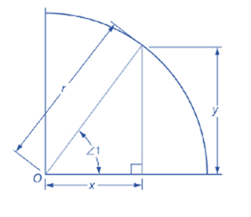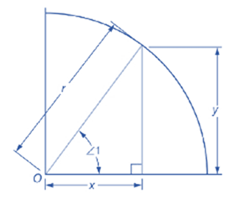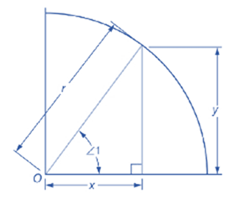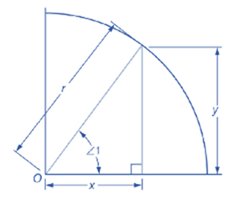1 Introduction To Common Fractions And Mixed Numbers 2 Addition Of Common Fractions And Mixed Numbers 3 Subtraction Of Common Fractions And Mixed Numbers 4 Multiplication Of Common Fractions And Mixed Numbers 5 Division Of Common Fractions And Mixed Numbers 6 Combined Operations Of Common Fractions And Mixed Numbers 7 Computing With A Calculator 8 Computing With A Spreadsheet 9 Introduction To Decimal Fractions 10 Rounding Decimal Fractions And Equivalent Decimal And Common Fractions 11 Addition And Subtraction Of Decimal Fractions 12 Multiplication Of Decimal Fractions 13 Division Of Decimal Fractions 14 Powers 15 Roots 16 Table Of Decimal Equivalents And Combined Operations Of Decimal Fractions 17 Computing With A Calculator 18 Computing With A Spreadsheet 19 Achievement Review—section One 20 Ratio And Propor Tion 21 Direct And Inverse Proportions 22 Introduction To Percents 23 Basic Calculations Of Percentages, Percents, And Rates 24 Percent Practical Applications 25 Achievement Review—section Two 26 Customary (english) Units Of Measure 27 Metric Units Of Linear Measure 28 Degree Of Precision, Greatest Possible Error, Absolute Error, And Relative Error 29 Tolerance, Clearance, And Interference 30 Customary And Metric Steel Rules 31 Customary Vernier Calipers And Height Gages 32 Metric Vernier Calipers And Height Gages 33 Digital Calipers And Height Gages 34 Customary Micrometers 35 Metric Vernier Micrometers 36 Digital Micrometers 37 Customary And Metric Gage Blocks 38 Achievement Review—section Three 39 Symbolism And Algebraic Expressions 40 Signed Numbers 41 Algebraic Operations Of Addition, Subtraction, And Multiplication 42 Algebraic Operations Of Division, Powers, And Roots 43 Introduction To Equations 44 Solution Of Equations By The Subtraction, Addition, And Division Principles Of Equality 45 Solution Of Equations By The Multiplication, Root, And Power Principles Of Equality 46 Solution Of Equations Consisting Of Combined Operations And Rearrangement Of Formulas 47 Applications Of Formulas To Cutting Speed, Revolutions Per Minute, And Cutting Time 48 Applications Of Formulas To Spur Gears 49 Achievement Review—section Four 50 Lines And Angular Measure 51 Protractors—simple Semicircular And Vernier 52 Types Of Angles And Angular Geometric Principles 53 Introduction To Triangles 54 Geometric Principles For Triangles And Other Common Polygons 55 Introduction To Circles 56 Arcs And Angles Of Circles, Tangent Circles 57 Fundamental Geometric Constructions 58 Achievement Review—section Five 59 Areas Of Rectangles, Parallelograms, And Trapezoids 60 Areas Of Triangles 61 Areas Of Circles, Sectors, And Segments 62 Volumes Of Prisms And Cylinders 63 Volumes Of Pyramids And Cones 64 Volumes Of Spheres And Composite Solid Figures 65 Achievement Review—section Six 66 Introduction To Trigonometric Functions 67 Analysis Of Trigonometric Functions 68 Basic Calculations Of Angles And Sides Of Right Triangles 69 Simple Practical Machine Applications 70 Complex Practical Machine Applications 71 The Cartesian Coordinate System 72 Oblique Triangles 73 Achievement Review—section Seven 74 Introduction To Compound Angles 75 Drilling And Boring Compound-angular Holes 76 Drilling And Boring Compound-angular Holes 77 Machining Compound-angular Surfaces 78 Computing Angles Made By The Intersection Of Two Angular Surfaces 79 Computing Compound Angles On Cutting And Forming Tools 80 Achievement Review—section Eight 81 Introduction To Computer Numerical Control (cnc) 82 Control Systems, Absolute Positioning, Incremental Positioning 83 Location Of Points 84 Binary Numeration System 85 Hexadecimal Numeration System 86 Bcd (binary Coded Decimal) Numeration Systems 87 An Introduction To G- And M-codes For Cnc Programming 88 Achievement Review—section Nine expand_more
Chapter Questions expand_more
Problem 1A: If tan A=4.13792 , determine the value of angle A in decimal degrees rounded to the nearest... Problem 2A: Find the number of cubic inches of material contained in the jig bushing shown. Round the answer to... Problem 3A: Find the number of cubic inches of material contained in the tapered shaft shown. Round the answer... Problem 4A: The sector of a circle has an area of 231.3 sq in. and a central angle of 6515'. What is the radius... Problem 5A: Determine the arc length ABC if r=5.75in. and ABC=85.5 . Round the answer to 2 decimal places. Problem 6A: Identify each of the following angles as acute. obtuse, right, straight, or reflex. (a)BAC,(b)BAD ,... Problem 7A: Refer to the following figure in answering Exercises 7 through 13. It may be helpful to sketch... Problem 8A: Refer to the following figure in answering Exercises 7 through 13. It may be helpful to sketch... Problem 9A: Refer to the following figure in answering Exercises 7 through 13. It may be helpful to sketch... Problem 10A: Refer to the following figure in answering Exercises 7 through 13. It may be helpful to sketch... Problem 11A: Refer to the following figure in answering Exercises 7 through 13. It may be helpful to sketch... Problem 12A Problem 13A: Refer to the following figure in answering Exercises 7 through 13. It may be helpful to sketch... Problem 14A: For each exercise, functions of two angles are given. Which of the functions of the two angles is... Problem 15A: For each exercise, functions of two angles are given. Which of the functions of the two angles is... Problem 16A: For each exercise, functions of two angles are given. Which of the functions of the two angles is... Problem 17A: For each exercise, functions of two angles are given. Which of the functions of the two angles is... Problem 18A: For each exercise, functions of two angles are given. Which of the functions of the two angles is... Problem 19A: For each exercise, functions of two angles are given. Which of the functions of the two angles is... Problem 20A: For each exercise, functions of two angles are given. Which of the functions of the two angles is... Problem 21A: For each exercise, functions of two angles are given. Which of the functions of the two angles is... Problem 22A: For each exercise, functions of two angles are given. Which of the functions of the two angles is... Problem 23A: For each exercise, functions of two angles are given. Which of the functions of the two angles is... Problem 24A: For each exercise, functions of two angles are given. Which of the functions of the two angles is... Problem 25A Problem 26A: For each function of an angle, write the cofunction of the complement of the angle. tan23 Problem 27A: For each function of an angle, write the cofunction of the complement of the angle. sin49 Problem 28A: For each function of an angle, write the cofunction of the complement of the angle. cos26 Problem 29A: For each function of an angle, write the cofunction of the complement of the angle. sec82 Problem 30A: For each function of an angle, write the cofunction of the complement of the angle. cot35 Problem 31A: For each function of an angle, write the cofunction of the complement of the angle. csc51 Problem 32A: For each function of an angle, write the cofunction of the complement of the angle. cos90 Problem 33A: For each function of an angle, write the cofunction of the complement of the angle. sin0 Problem 34A: For each function of an angle, write the cofunction of the complement of the angle. tan57.5 Problem 35A: For each function of an angle, write the cofunction of the complement of the angle. cos12.2 Problem 36A: For each function of an angle, write the cofunction of the complement of the angle. cot710 Problem 37A: For each function of an angle, write the cofunction of the complement of the angle. cos3606 Problem 38A: For each function of an angle, write the cofunction of the complement of the angle. sin038 Problem 39A: For each function of an angle, write the cofunction of the complement of the angle. sin5.89 Problem 40A: For each function of an angle, write the cofunction of the complement of the angle. cos7.76 Problem 41A Problem 42A: For each function of an angle, write the cofunction of the complement of the angle. tan90 Problem 43A: For each function of an angle, write the cofunction of the complement of the angle. sec4319 Problem 44A: For each function of an angle, write the cofunction of the complement of the angle. cos0.01 Problem 45A Problem 46A: For each exercise, functions and cofunctions of two angles are given. Which of the functions or... Problem 47A Problem 48A: For each exercise, functions and cofunctions of two angles are given. Which of the functions or... Problem 49A Problem 50A: For each exercise, functions and cofunctions of two angles are given. Which of the functions or... Problem 51A Problem 52A: For each exercise, functions and cofunctions of two angles are given. Which of the functions or... Problem 53A Problem 54A: For each exercise, functions and cofunctions of two angles are given. Which of the functions or... Problem 55A Problem 56A: For each exercise, functions and cofunctions of two angles are given. Which of the functions or... Problem 57A format_list_bulleted





 Mathematics For Machine TechnologyAdvanced MathISBN:9781337798310Author:Peterson, John.Publisher:Cengage Learning,
Mathematics For Machine TechnologyAdvanced MathISBN:9781337798310Author:Peterson, John.Publisher:Cengage Learning, Holt Mcdougal Larson Pre-algebra: Student Edition...AlgebraISBN:9780547587776Author:HOLT MCDOUGALPublisher:HOLT MCDOUGAL
Holt Mcdougal Larson Pre-algebra: Student Edition...AlgebraISBN:9780547587776Author:HOLT MCDOUGALPublisher:HOLT MCDOUGAL Trigonometry (MindTap Course List)TrigonometryISBN:9781305652224Author:Charles P. McKeague, Mark D. TurnerPublisher:Cengage Learning
Trigonometry (MindTap Course List)TrigonometryISBN:9781305652224Author:Charles P. McKeague, Mark D. TurnerPublisher:Cengage Learning Trigonometry (MindTap Course List)TrigonometryISBN:9781337278461Author:Ron LarsonPublisher:Cengage Learning
Trigonometry (MindTap Course List)TrigonometryISBN:9781337278461Author:Ron LarsonPublisher:Cengage Learning Elementary Geometry For College Students, 7eGeometryISBN:9781337614085Author:Alexander, Daniel C.; Koeberlein, Geralyn M.Publisher:Cengage,
Elementary Geometry For College Students, 7eGeometryISBN:9781337614085Author:Alexander, Daniel C.; Koeberlein, Geralyn M.Publisher:Cengage,




